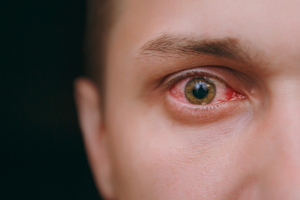New York, Oct 20 (IANS) A team of researchers has found that taking an antiviral medication for a year may prevent vision damage associated with shingles that affects the eye.
The research was led by team from the Perelman School of Medicine at the University of Pennsylvania and the NYU Grossman School of Medicine at NYU Langone Health in the US.
“There has been no proven long-term treatment for new, worsening, or repeated episodes of this disease, so the results of this study provide convincing evidence for using long-term, low-dose antiviral treatment,” said Bennie Jeng, chair of Ophthalmology at the Perelman School of Medicine.
Ocular shingles begins in the nerve connecting the brain to the eye and is present in almost 100,000 of the million people who develop shingles each year in the United States.
Roughly 30,000 of HZO cases result in patients’ vision declining to 20/60 or worse, meaning that if a typically-sighted person could see an object clearly at 60 feet, these patients would have to move up to at least 20 feet to see it.
Beyond that, approximately 10,000 patients who develop HZO experience legal blindness, meaning their vision is reduced to 20/200 or worse.
For patients who had recurrences or new findings of HZO, there was never a clear course of treatment to reliably prevent complications such as vision loss.
The study, led by Elisabeth J Cohen, a professor of ophthalmology at NYU Grossman School of Medicine, examined the long-term use of the existing antiviral treatment valacyclovir, which is already used to initially treat any case of shingles, albeit only for seven to 10 days.
The researchers showed that using valacyclovir for a year can decrease the risk of new or worsening eye disease by 26 per cent at 18 months after initiating treatment.
Patients treated with valacyclovir also were 30 per cent less likely than those not receiving the treatment to have multiple HZO flare-ups at a year or a year-and-a-half later.
“We hope that our work creates a relatively simple path toward preventing vision changes that can be life-altering,” said Jeng. “With this drug already being part of the regular clinical treatment for shingles, we don’t envision significant barriers to making this a standard of treatment.”
–IANS
na/


Comments are closed.